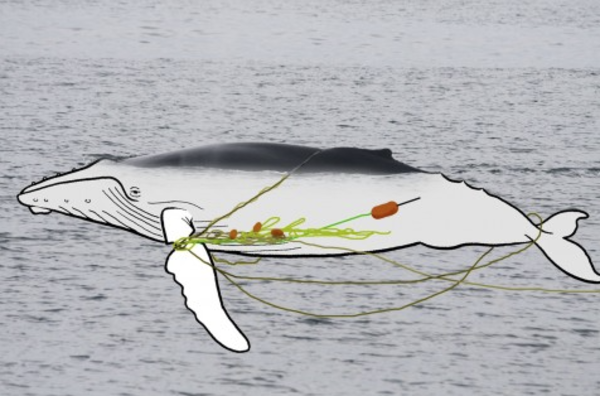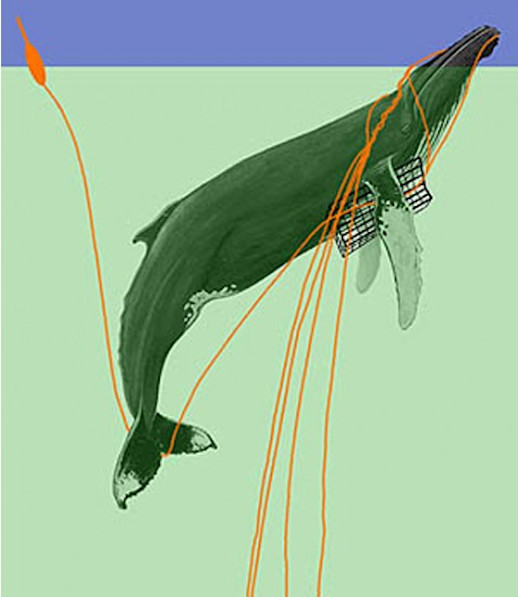
Entanglement
Entanglement specifically refers to the wrapping of lines, netting, or other materials of anthropogenic origin around the body of an animal, while bycatch refers to the unintentional capture of species such as small cetaceans in fishing nets. Worldwide, both entanglement and bycatch in fisheries operations pose a major risk for 86% of the world’s toothed whales, according to the Convention on the Conservation of Migratory Species of Wild Animals. This review of the status of the world’s odontocetes (toothed whales) found that the primary threat for 62 of the 71 extant species is by-catch in fisheries operations, a major increase from the 2001 report that estimated only 70.4% (50 species) were affected by this risk.
The Problem
Entanglement is a pressing and longstanding threat to the wellbeing of cetaceans globally. Entanglement doesn’t only cause injury and distress in whales, and restrict life-sustaining day-to-day activities; whales can also be anchored in place by fishing gear such as crab and prawn traps and aquaculture gear, causing them to drown. Various forms of fishing gear such as gillnets, driftnets, traps, weirs, purse-seine nets, long-lines, trawls and others were implicated with causing entanglement that may lead to suffocation and death of whales, dolphins and porpoises. Globally, over 300,000 small cetaceans die each year due to entanglement in fishing gear 2 . Several species are at high risk of extinction due to bycatch, including the vaquita in the Gulf of Mexico and Maui’s dolphins in New Zealand.

With entanglements, there can be a lot going on under the surface of the water. Not only is attempting to disentangle a whale on your own increadibly dangerous, cutting only the ropes on the surfaces makes the entanglement less obvious, and greatly reduces a whale’s chance of recieving help. Call the Marine Mammal Incident Response Network immediately and stay with the whale so that it can be located easily. (Diagram: Provincetown Centre for Coastal Studies)